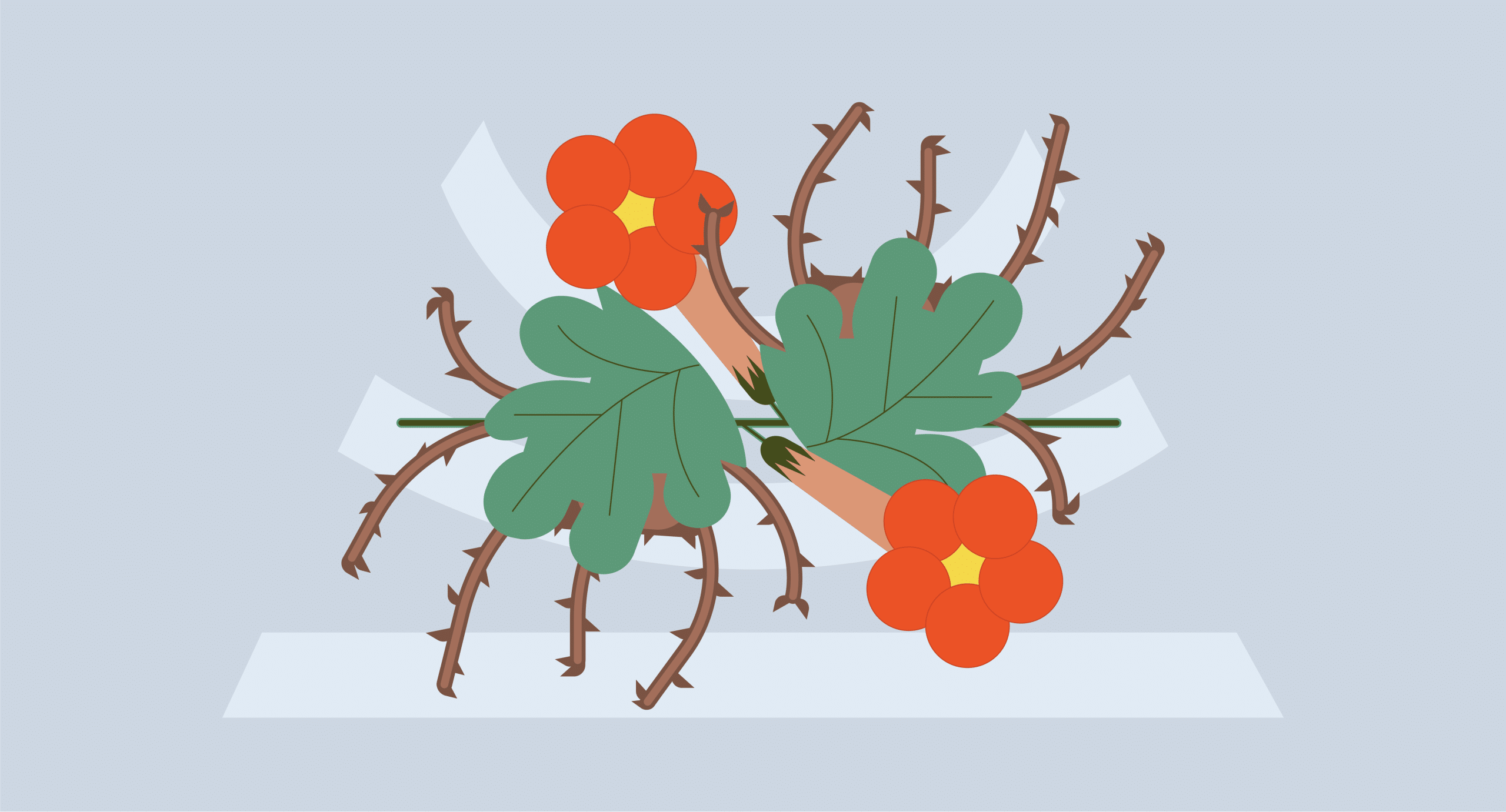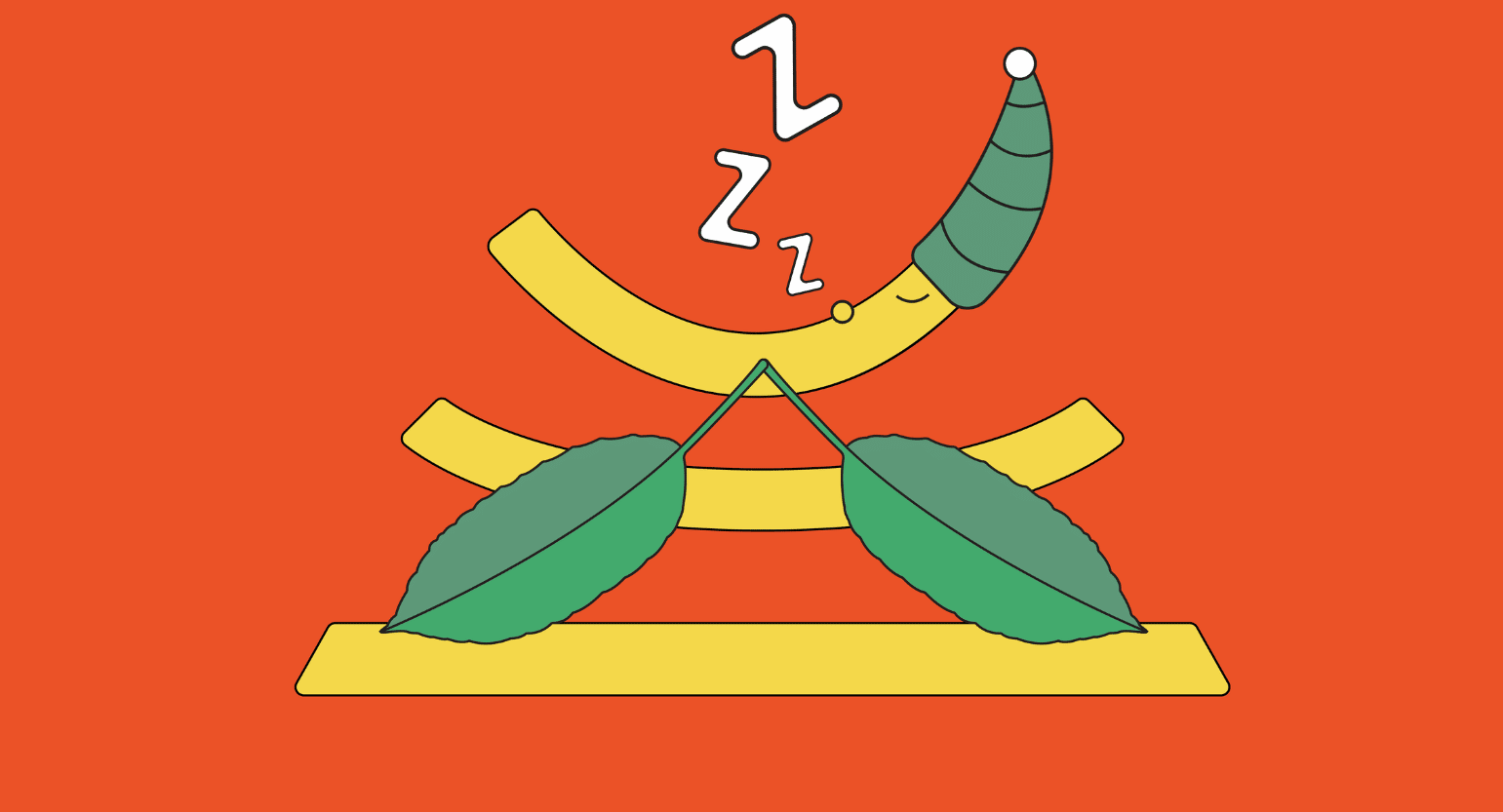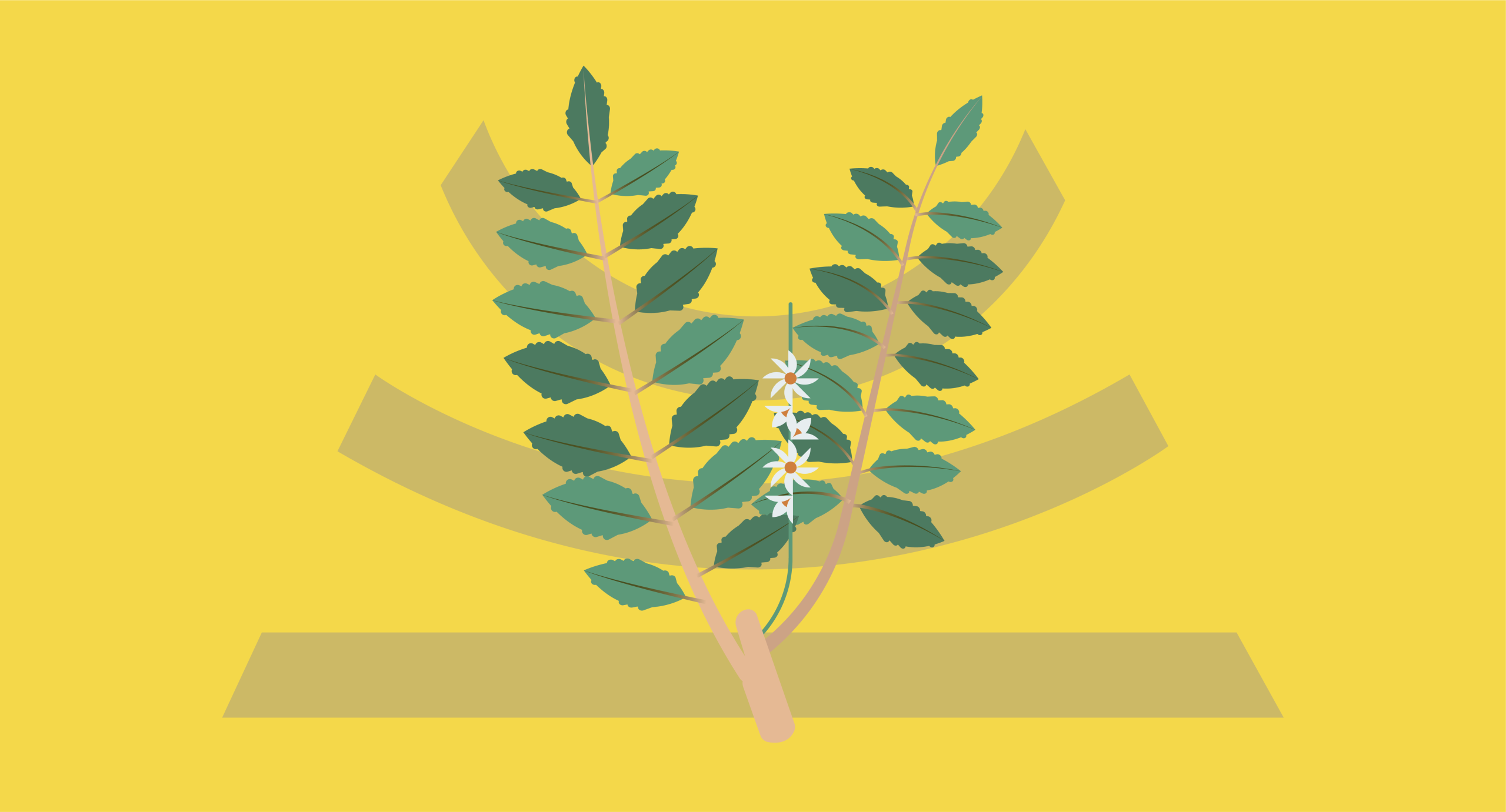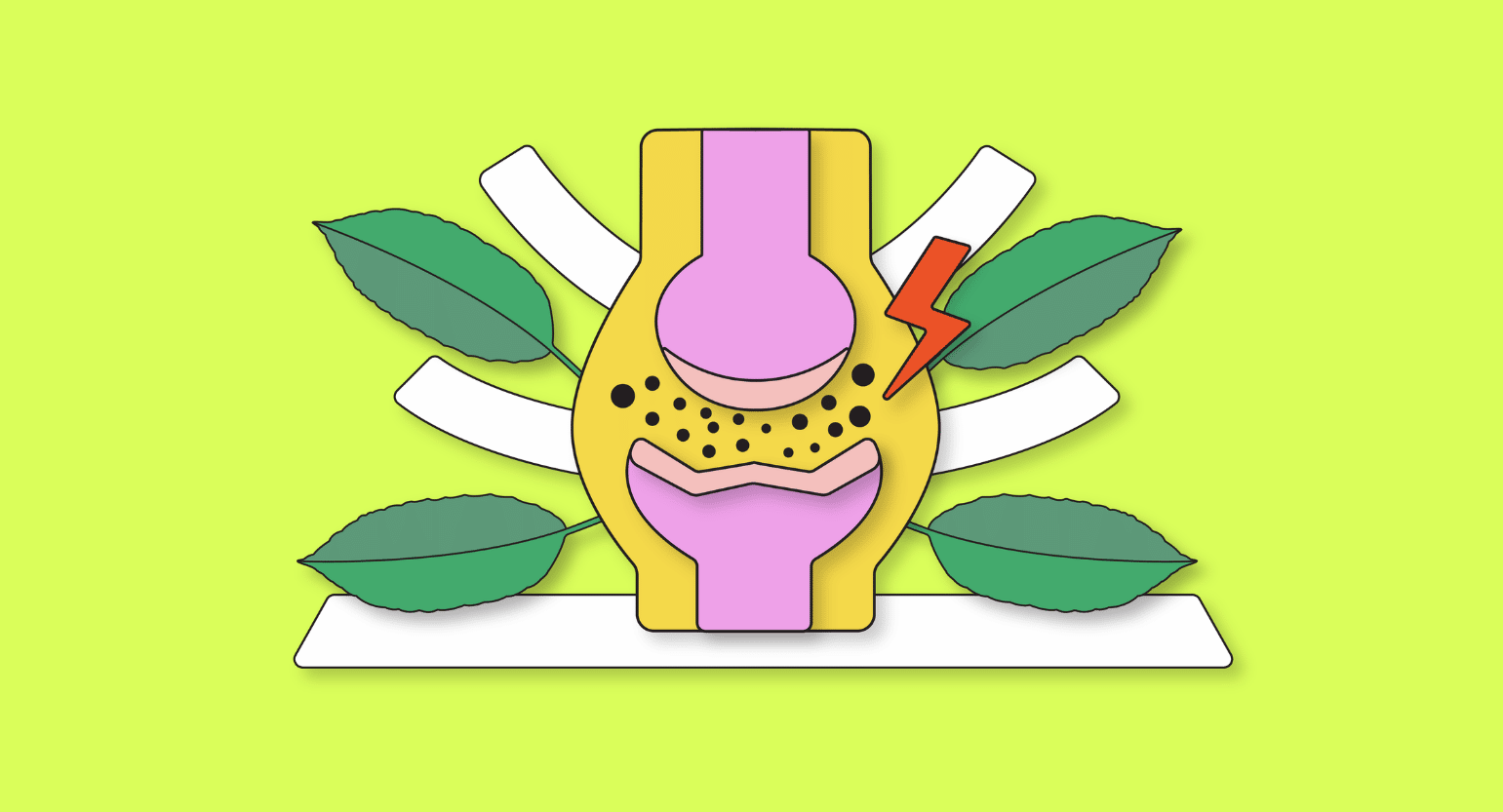Description of Devil’s Claw
| Kingdom | Plantae |
| Subkingdom | Tracheophytes |
| Division | Angiosperms |
| Class | Eudicots |
| Order | Asterids |
| Clade | Lamiales |
| Family | Pedaliaceae |
| Species | Harpagophytum spp. (H. procumbens / H. zeyheri) |
The devil’s claw of international acclaim is a two-faced taxonomical anomaly.
Harpagophytum procumbens and Harpagophytum zeyheri are botanically acknowledged as the same plant, despite several subtle differences. As such, “devil’s claw,” “the plant,” “it,” etc. may refer to either plant, though H. procumbens is generally the first consideration.
Devil’s claw is a member of the Pedaliacaeae family and has several equally interesting names: grapple plant, wood spider, and harpago, to name a few.
Despite having two botanical names, the plants both look nearly identical and remain impossible to differentiate post-harvest. The European Pharmacopeia and many other official herbal compendiums acknowledge both as valid for producing “devil’s claw root.”
The plants grow natively to the southern regions of Africa, preferring the arid Kalahari Sands. These stretch through Namibia, Botswana, South Africa, Angola, Zambia, and Zimbabwe. The plants are weed-like perennials that trail along the ground throughout these countries in spurts that grow no longer than 18 inches.
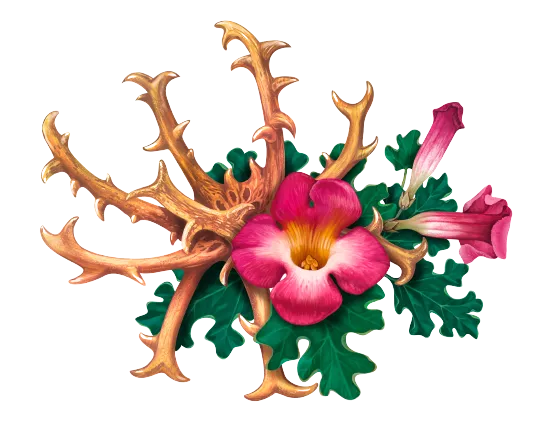
The plant hosts a strong taproot that can bury itself a whopping two meters deep in the sand — this is its primary root. It develops a series of secondary roots, or tubers, that branch off the sides of the central taproot and is the most important medicinal component of the plant.
The plant uses these for storing water and nutrients. They appear similar in appearance to elongated sweet potatoes.
The leaves are quite big, each possessing between 3 to 5 lobes. They are gray-green, coated in mucilage, and sprouting trumpet-shaped flowers that span in color from pink to red and purple with an off-yellow center.
The fruit the flower produces is woody and sharp, producing the actual claws of the plant. Leaves wield long, twisted barbs that can easily hook onto anything soft, fleshy, or furry.
It is here that meticulous botanists can often discern between the two subspecies.
H. procumbens has arms that tend to be longer than the spiky fruits are wide, whereas the arms of the H. zeyheri are shorter or equal to the fruit’s width. Aside from that, the plants are virtually identical, save for the number of seeds in each fruit.
Traditional Use
Many South African people have used the roots and tubers of the devil’s claw plant for their medicinal benefits. Two tribes, the San and the Khoikhoi, were known to be particularly involved with using the plant.
Many countries still rely on natural methods for oral health. One such process involves chewing the devil’s claw sticks [2].
Though it may seem odd to those of us in developed countries where dental hygiene is an advanced science, this method is still commonplace in many areas, especially rural Namibia. Here, devil’s claw sticks make up the second-largest non-timber forestry product.
Known simply as ‘chewing sticks,’ dozens of plant species employed throughout Africa and elsewhere abroad effectively improve oral hygiene. In fact, modern-day Ayurvedic medicine practitioners may recommend scrubbing the teeth with sticks like licorice.

H. zeyheri, in particular, is used to produce a popular mouthwash in rural Namibia. The sticks are also chewed to prevent bacterial buildup and bad breath. The locals believe chewing sticks strengthen the roots of the teeth, but no study has confirmed this.
Despite this seemingly harmless and wholesome behavior, chewing sticks is not without risks. Over-chewing or improperly chewing, like over-brushing or brushing your teeth, can cause more damage than it heals [3].
Taxonomical & Etymological History
The San referred to the plant as //x’aatataba’’ or tloutaxaba. In Afrikaans, still spoken widely in Namibian and South African regions, devil’s claw is called Duiwelsklou. This name sounds quite similar to our English pronunciation of devil’s claw and the Dutch and German words (Duivelsklauw and Teufelskralle, respectively).
The first English classification of the plant was made in 1822 by botanist William John Burchell, who named it the grapple plant. He first placed the plant in the Rubiaceae genus and also gave the species its current name. Derived from Latin, procumbens means “lying down.”
The genus was named after two Greek words: Harpagos and python, which mean “grappling hook” and “plant,” respectively.
Within the next decade or so, the plant’s classification as Rubiacaea was challenged by the Swiss botanist Augustin Pyramus de Candolle and his son, Alphonse. Thus the plant was placed in the Harpagophytum genus.
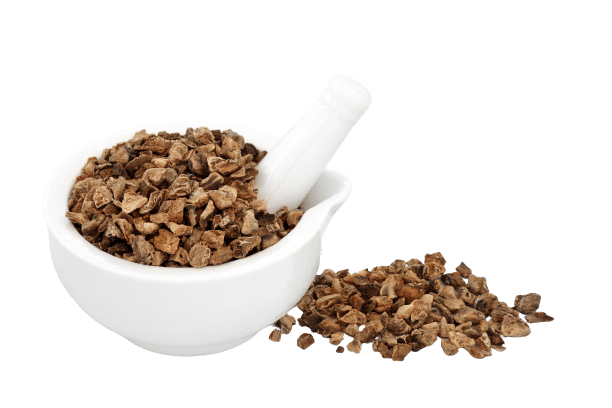
Their decision to share their work with a fellow Swiss botanist named Charles Meissner led to the first publication of the Harpagophytum genus name in 1840 when Meissner revealed the name in one of his published works.
The H. zeyheri species was named after Karl Ludwig Phillip Zeyher, a well-known German botanist whose work frequently found him in South Africa. Joseph Decaisne of Belgium was the one who chose this name for the plant.
In 1865, botanist Decaisne reviewed the genus and officially acknowledged four members: H. procumbens, H. burchelli, H. zeyheri, and H. leptocarpum [6].
A more recent review was conducted in 1970 by Ihlenfeldt and Hartmann. The duo redefined the genus as containing two species and five subspecies. The subspecies are differentiated mostly based on the shape of borne fruits and the number of seeds within [4, 7].
The species and subspecies are:
H. procumbens (Burch)
- H. procumbens (Burch.) DC ex Meisn, ssp procumbens
- H. procumbens (Burch.) DC ex Meisn. Ssp transvaalense Ihlenf & H. Hartm
H. zeyheri Decne.
- H. zeyheri Decne. Ssp, zeyheri
- H. zeyheri Decne. Ssp, schiffli Ihlenf. & H. Hartm
- H. zeyheri Decne. Ssp, sub lobatum (Engler) Ihlenf & H. Hartm
Most modern herbal compendiums list both H. procumbens and H. zeyheri under the name devil’s claw. Some list only H. procumbens. None list solely H. Zeyheri [12].
Other Plants Called Devil’s Claw
Several other plants are sometimes referred to as devil’s claw.
Proboscidea parviflora (Red Devils’s Claw)
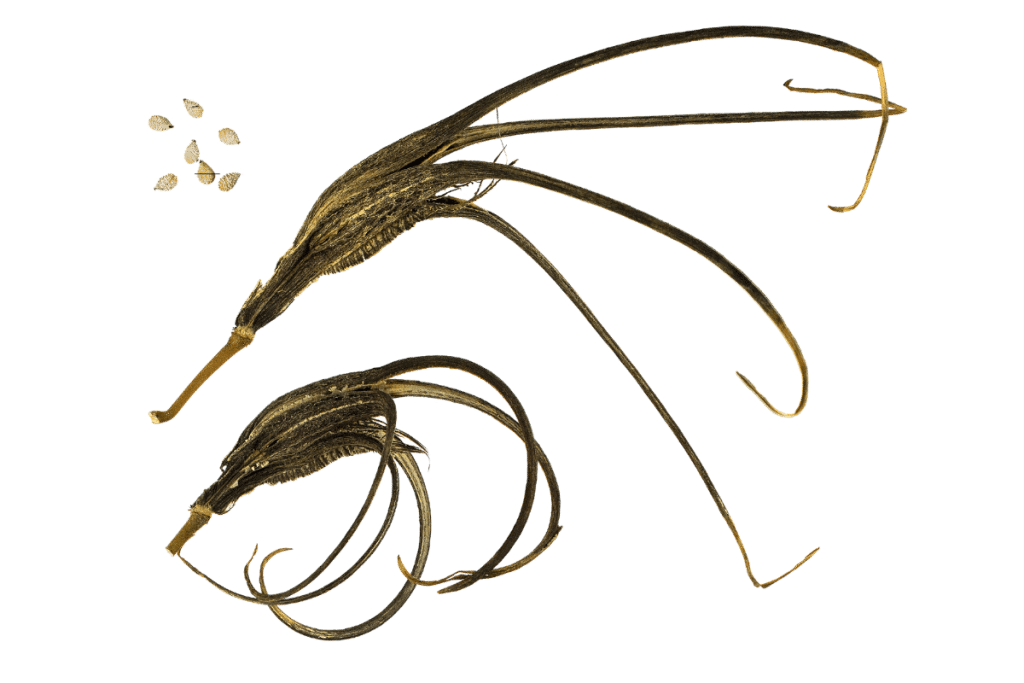
| Order | Lamiales |
| Family | Martyniaceae |
| Genus | Proboscidea |
| Species | Parviflora |
One of these is Proboscidea parviflora, a flowering plant in the Martyniaceae family. It’s also known as double claw or, more specifically, red devil’s claw. This plant grows in the southwestern deserts of the United States and Mexico.
It prefers to grow in dry, hot, disturbed regions and blooms during the peak of summer. An annual herb with a taproot and rounded or slightly triangular leaves, the leaves can reach up to 15 cm long.
The inflorescence is made of an arrangement of bell-shaped flowers with five different lobes that flare out a few centimeters in width. These can be colored anywhere between white and purple.
The plant reproduces through seeds that it produces in a large, thin pod. The seed-bearing fruit pod becomes the plant’s tail when it stretches out. The plant’s name comes from the fact that the tail cracks open as it matures, splitting into two hooked halves that look like claws.
Ibicella lutea (Unicorn Plant)
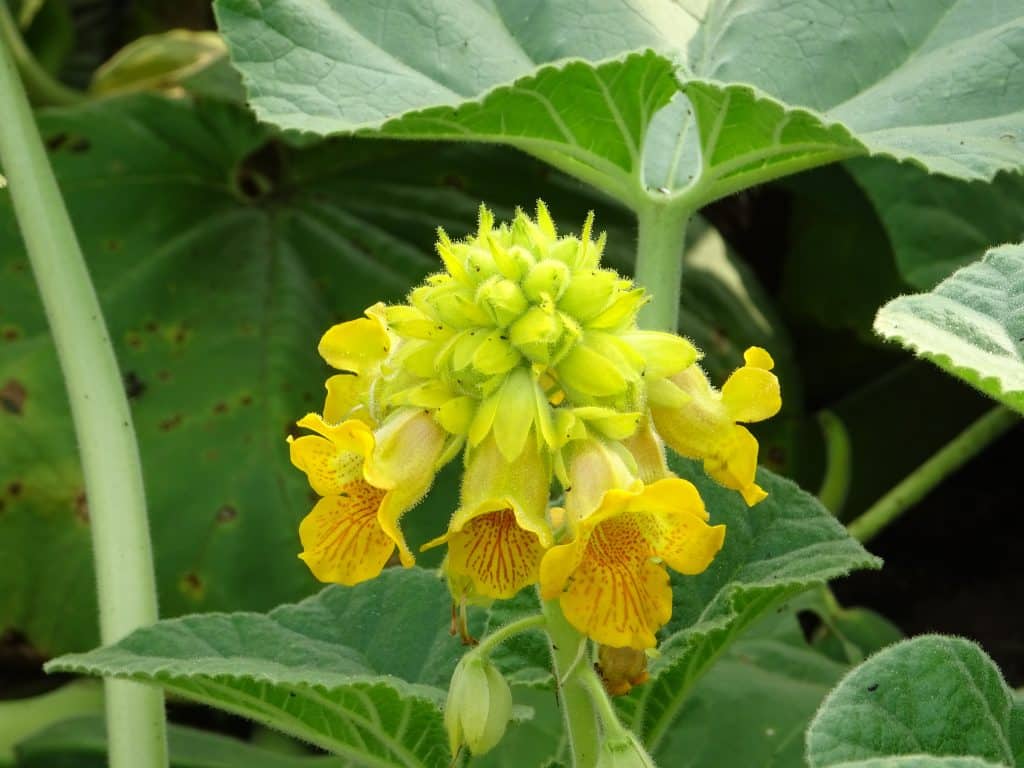
| Order | Lamiales |
| Family | Martyniaceae |
| Genus | Ibicella |
| Species | Lutea |
Another is Ibicella lutea, a flowering plant that grows in South America and is sometimes known as the unicorn plant, devil’s nail, Akumano netsu, or Tabibito nakase. It’s in the same family as P. parviflora but has mind-shaped leaves that grow on the stem, like the plant P. japonicus.
This plant is sometimes considered carnivorous because hairs on the stems of the leaf can capture insects. This plant earns the name devil’s claw because the tip of the fruit looks like a goat’s horn, which is often associated with the devil. Furthermore, this hook often catches and injures people and wildlife.
Martynia annua
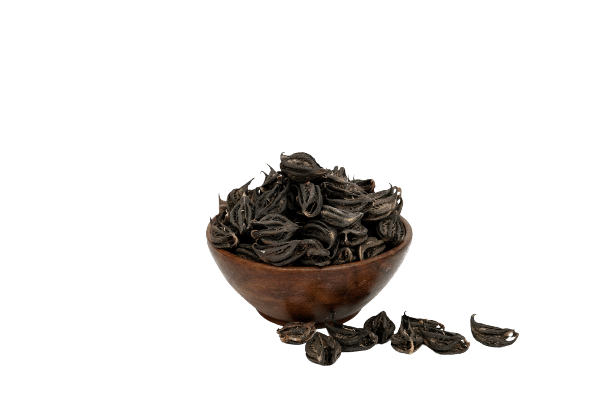
| Order | Lamiales |
| Family | Melastomataceae |
| Genus | Martynia |
| Species | Annua |
Martynia annua is an annual herb that grows in the tropics. It prefers to grow in full sun to partial shade and has long flowers that are a deep purple in color.
The plant has very fine hairs on the trunk and the leaves, which are slightly sticky and oddly shaped. It can dry out quite easily if it doesn’t get a lot of water.
According to legend, the plant was used as a food source by Native Americans in the areas now called Louisiana and Montana. However, the knowledge of how to obtain the seeds and prepare them for food has since been lost.
The plant was believed to propagate itself due to the shape of its seed, which is claw-like, giving the plant its name. The seed would hook onto the fur or skin of passing animals or people and be carried off to other regions.
Colonial History & Early Botanical Study
It wasn’t until the middle of the 1900s that people in Europe became aware of devil’s claw as a medicinal plant. Intriguingly, no reports of indigenous plant usage exist before two 19th-century accounts from Wood and Cooke, who mostly spoke ill of the plant.
Referring to it as the grapple plant, Uncaria procumbens, as it was named before being placed in the Harpagophytum genus, Wood described the plant as such: [10]
“The reader may easily imagine the horrors of a bus which is beset with such weapons. No one wh owears clothes has a chance of escape from them. If only one hooked thorn catches but his coat-sleeve, he is a prisoner at once… if the reader would like to form an idea of the power of these thorns, he can do so by thrusting his arm into the middle of a thick rose-bush and mentally multiplying the number of thorns bya hundred, and their size by fifty.”
The first account of the plant’s medical use came from Lubbert. He reported that the locals would use the plant’s tubers, which they called Kuri-Khamiknollen, or tubers of khuripe/khams (the local name for H. procumbens.)

The plant’s true discovery is often traced and accredited to the observation of Gottreich Hubertus Mehnert, a soldier who decided to become a farmer in Namibia. However, a deeper examination of research sources reveals two prior significant contributions to European literature regarding the plant.
The first came from Hellwig in 1907. A medical officer in German-occupied South Africa, he compiled reports on the use of ethnobotanical medicine among local peoples. One reference records the account of one Herero Samuel Kariko, who referred to the devil’s claw as “otjihangatene.”
His record stated that the plant helped treat coughs, diarrhea, constipation, and venereal diseases. This record was cited twice by Dinter, once in 1909 and again in 1912, while reporting on edible plants in the region. However, his records failed to acknowledge the purported medical qualities as they had not yet been validated scientifically [13 –15].
The Mehnert Controversy
The generally acknowledged tale regarding the discovery of devil’s claw accredits Hubertus Mehnert as the first to recognize its value.
Employed in the same cops as Hellwig during the Hottentot uprising of 1904-1908 (which was, in all reality, a genocide against local tribes that has been officially acknowledged within recent years), he witnessed a local healer using a plant to quickly improve the health of a wounded member of the community.
When pressed, the healer refused to give up the location of his harvesting spot. Thus, Mehnert is said to have sent his pointer dog out to locate the plant so he could sing its praises back to people in Germany [16].
Most likely, though, this story was part of a marketing scheme, as the evidence clearly shows that multiple botanists were aware of the plant’s existence prior to Mehnert. On top of this, the tribes who shared their knowledge with Lubbert and Hellwig should be credited.
By the time the second world war had arrived, several versions of the Mehnert story had been written by various authors, and he had managed to consolidate all of his studies on the plant.
His plan to commercialize it would begin after his internment in the temporary Andalusia Internment Camp in Bloemfontein. In this South African town, he spent four years as a prisoner of war during the 40s.
Otto Heinrich Volk, a fellow German scientist who decided to travel to German-occupied Africa at an inconvenient time, found himself imprisoned with Mehnert. Volk also helped to promote awareness of the plant during this time, which Mehnert had been marketing as a product he called “Harpago-Tee,” made from devil’s claw.
After sending Volk back with samples and beginning to export the plant, research really began. A swath of German botanists and scientists made much progress over the next few decades, illustrating and describing the plant for herbal compendiums back in Europe.
The Beginnings of Modern Research
The first samples of actual plant matter were sent back during the 50s by Mehnert. The samples received by Dr. Paul Tunmann of the University of Wurzburg and Professor Zorn from the University of Jena were used in rat studies.
The rats were forced to develop arthritis via formaldehyde exposure. Devil’s claw displayed significant anti-arthritic effects when subcutaneously injected and consumed orally as an aqueous extract.
Tunmann proceeded to co-author the first paper on the plant’s active components, which was published in 1962; two years later, Volk released a publication regarding its preferred growing conditions, cultivation, and history.
By 1977, Harpagosan-branded tea was registered as a botanical drug for medicinal purposes in Germany. It was used both as an infusion and as a homeopathic remedy.
The following explosion in the plant’s popularity as both a medicine and a source for pharmaceutical agents became a global phenomenon; more than 434 products containing it have since been listed in Germany alone [17].
Since then, research has continued to prove devil’s claw to be beneficial for numerous ailments. It remains one of the most versatile and important herbal medicines on the planet. The first monograph of Harpagophytum was published in 1971 in the United Kingdom [19].
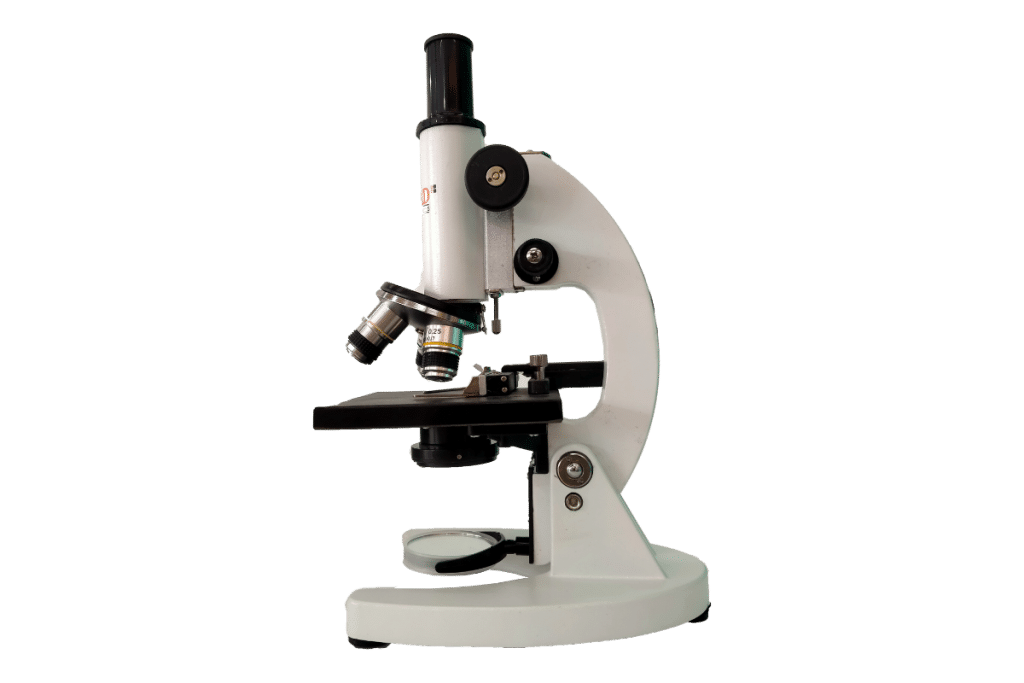
It became rapidly known as one of the most effective herbal treatments. It was prescribed in the UK for rheumatism, arthritis, gout, myalgia, fibrositis, lumbao, and pleurodynia. In Germany in 1989, following the publication of the Harpagophytum monograph, it was recommended as supportive therapy for degenerative disorders. This was the first year that quality standards for the harvesting and production of the plant were published [20].
Cultivation
Roots generally need at least four years in the ground to develop the necessary alkaloid content for them to be effective medicinally. Historically, devil’s claw has been wild-harvested for nearly all time. The first cultivation experiments didn’t take place until the ’70s, and the first plantation wasn’t in operation until 1997.
The First Regional Devil’s Claw Conference was held five years later to discuss sustainability and ecological challenges. This led to the development of commercial plantations in South Africa and Namibia, which were firmly established by 2002.
It will not be easy if you’re privy to growing a devil’s claw yourself. You will need to be able to simulate the environment in which it grows in nature, i.e., the desert.
You’ll need to pay a lot of attention to your substrate. A suitable substrate is a mineral patch with a significant portion of sand; additional aggregates like vermiculite can help store heat and retain moisture. Regular potting soil is a no-go.
Since the seeds are light germ, you should only push them half a centimeter into your substrate. You’ll need to keep the temperatures between 73 to 77 F (23 and 25 C) for anything to happen. Sow them first into their small pots between 6-10 cm each.

To maintain heat, wrap the planter in a plastic bag to prevent moisture loss. Water once, along with some mineral fertilizer, then leave them until they germinate without worrying about irrigating them anymore.
Don’t expect much. Seeds have a germination rate as low as 20%. They may also take up to three months to germinate. Even if they do germinate, the plant won’t do well unless you live in a hot area or can simulate a daily temperature of 80-95 F (27-35 C). Night-time temperatures can vary without as much impact.
Economic Value
The first plantation began in South Africa and was led by Prof. Earle Graven. Working with Grassroots Natural Products, Graven wanted to ensure that there was a sustainable supply of devil’s claw available.
Although still in operation, they do not contribute significantly to the economy.
About 55% of Namibia’s annual export of the genus is H. zeyheri, whereas 45% is H. procumbens. This constitutes the majority of the world’s supply; other countries have different export ratios, with South Africa being second to Namibia in quantity [8].
Unfortunately, it’s nearly impossible to differentiate between the species and subspecies of devil’s claw once harvested. One can assume that since the 70s, most devil’s claw products have been either one or the other or a combination of both significant species and subspecies [9].
This is why herbal compendiums allow “devil’s claw” to refer to two different plants. Because of the difficulty in identifying harvested plant matter, the harpagoside content is used to evaluate the quality.
Herbal & Pharmaceutical Actions
The devil’s claw tubers have several traditional herbal actions. They work well as a laxative and help to fight headaches and fevers. They can soothe digestion and labor pains and combat malaria.
Devil’s claw is an analgesic and can be used topically to help relieve discomfort from boils, sprains, sores, and child labor. As a bitter tonic, it can also enhance digestion and reduce inflammation.
Analgesic and antibacterial properties allow for an effective mouthwash to be made from devil’s claw that can help to soothe bleeding gums. The plant also helps to regulate blood pressure and menstrual cramps.
Authorized Uses in Various Regions
In the European Union, registered THMPs made from devil’s claw tubers can be sold for “relief of minor articular pain,” or for “relief of mid digestive disorders like bloating and flatulence.” The products can then be sold at the doses recommended in the EMA standards monograph [15].
In Canada, the plant is a component of numerous natural health products (NHPs). These must be screened and authorized before being marketed by the Natural & Non-prescription Health Products Directorate, or NNHPD.
NHPs can be licensed and prepared from devil’s claw that passes the quality control described in the European Pharmacopoeia. They can be sold for being “traditionally used in herbal medicine as a bitter to stimulate appetite, relieve digestive disturbances, and to relieve joint pain associated with arthritis.”
American legislation states that devil’s claw can be a component of dietary supplements, but if marketers make any medical claim, the FDA must be notified within a month. This claim will only be considered if the product is manufactured in a cGMP-approved facility.
Parts of Devil’s Claw Used
According to a study that evaluated the local knowledge of devil’s claw among various demographics in western Zimbabwe, the tubers are considered the most valuable part of the plant, with 53% of respondents agreeing with this to be true [1].
The next most valuable part was the leaves, favored by 29% of respondents, and the leaves, favored by 18%. Most respondents agreed that the most important use for the plant was medicinal, although veterinary and ritual uses were also suggested.
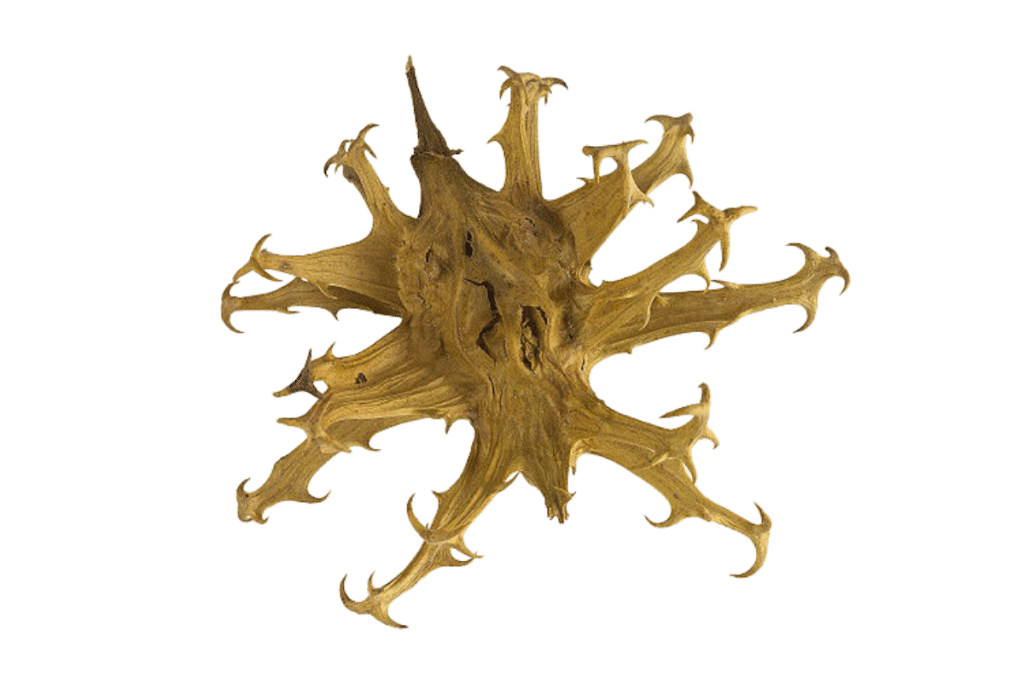
This certainly rings true on the global stage, where it remains difficult to obtain anything but the plant’s tubers. They are the richest source of medicinal compounds and, thus, the main export from the countries that produce them.
How is Devil’s Claw Used?
Members of the San and Khoikhoi tribes would use devil’s claw internally and externally. Before the root can be stored or used medicinally, it has to be chopped and dried in the sun for three days, according to some folklore.
Its most common use was as a digestive stimulant, anti-inflammatory, and pain reliever. Preparations were taken in the form of a bitter tonic, a mouthwash, or an ointment.
The first recommendation brought to European attention, as per Mehnert’s original advertisement for his product, was to take a couple of teaspoons of the herb and steep it overnight in recently-boiled water. This was to be drunk the next day, a third at a time, for 3 to 6 months.
Nowadays, many different products exist containing devil’s claw in various formulations. It is generally taken orally. Different extracts of varying potencies can be used for other purposes.
The current, most commonly-employed patents involving devil’s claw include [18]:
- 1:1 liquid extracts with 30% ABV
- 2.5 to 4:1 soft extracts with 70% ABV
- Dry extracts made with water, either 1.5-2.5:1 or 5-10:1
- Dry extracts of varying potencies and with various ABVs, ranging from 1.5-2:1 with 30% ABV to 6-12:1 with 90% ABV
- Tinctures of 1:5 with 25% ABV are common
Active Constituents & Alkaloids in Devil’s Claw
Most of what we know about the alkaloidal content of Devil’s Claw was elucidated by the end of the 80s.
The main compounds include:
- Iridoid-glycosides, the main one being harpagoside. Harpagide and procumbide are also common.
- Phytosterols and phenylpropanoids, including verbascoside
- Triterpenes include oleanolic acid, 3b-acetyl oleanolic acid, as well as ursolic acid.
- Flavonoids including kaempferol and luteolin
- Unsaturated fatty acids
- Cinnamic acid
- Chlorogenic acid
- Stachyose
Though the content has been discovered, researchers are not entirely sure of the metabolic pathways involved in producing these compounds.
Pharmacology of Devil’s Claw
The use of H. procumbens as a health tonic throughout southern Africa has sparked interest in its pharmacological profile. Ever since its introduction in Europe, the plant has been regarded as an effective herbal remedy for various conditions [21].
Its herbal uses in Europe included its anti-inflammatory and analgesic effects as a supportive or adjuvant treatment for the following:
- Degenerative joint conditions
- Tendonitis
- Headaches
- Backaches
- Menstrual pains
Studies have proven relatively consistently that H. procumbens is a reliable anti-inflammatory and analgesic agent [5].
This has been the most extensively studied aspect of the plant. The iridoid compounds are considered to be the primary active metabolites. They are responsible for the plant’s many medicinal properties.
Researchers are unsure of how exactly devil’s claw works, though. Vanhaelen discovered when mimicking conditions of the stomach that harpagide and harpagoside did not bide well and suggested that enteric preparations might be better absorbed, considering the low bioavailability (Chrubasik discovered 100 mg, taken daily, could not be detected in blood serum) [22, 23].

Scientific Evidence for Benefits of Devil’s Claw
These are some of the most prominent studies on devil’s claw plants and their alkaloids.
Anti-Inflammatory Effect
One study revealed a dose-dependent analgesic and anti-inflammatory benefit from a dried extract of H. procumbens. The doses that showed significant clinical effects in rats were 5 and 10 mg/kg [25].
The same study revealed that the plant’s anti-inflammatory effect might not be related to the alkaloid harpagoside. An isolated extract of harpagoside showed no positive effect on edema reduction in rats, at least not in doses equivalent to those necessary to precipitate anti-inflammatory effects in full-spectrum extracts.
That said, harpagoside does seem to be capable of indirectly reducing inflammation. Another study revealed that the alkaloid could inhibit inducible nitric oxide (iNOS) caused by lipopolysaccharides. It also inhibits the expression of cyclooxygenase-2 by suppressing KappaB nuclear factors.
Both of these actions contribute to a reduction in inflammation, at least in test tube studies involving the use of two rat cell lines [26].
A third study evaluated the effects of devil’s claw extracts made from the root. The study compared their influence on inducible nitric oxide expression in rat cells in vitro.
The two extracts varied significantly in their harpagoside content. The first contained 8.9% harpagoside, while the second contained 27%. Despite the differences, both extracts inhibited the formation of nitrates.
A third extract was later introduced from which harpagoside was absent. It also helped reduce the expression of iNOS, suggesting that other alkaloids are at work suppressing inflammation [27].
Pain Relief & Analgesia
Isolated harpagoside seems to act as a peripheral analgesic in human studies. Studies evaluated its effect on reducing pain in both patients with knee and hip osteoarthritis, as well as patients with lower back pain.
Although the study didn’t specify or identify the mechanism by which harpagoside provided its analgesic benefits, researchers suspect it’s related to its anti-inflammatory properties [28].
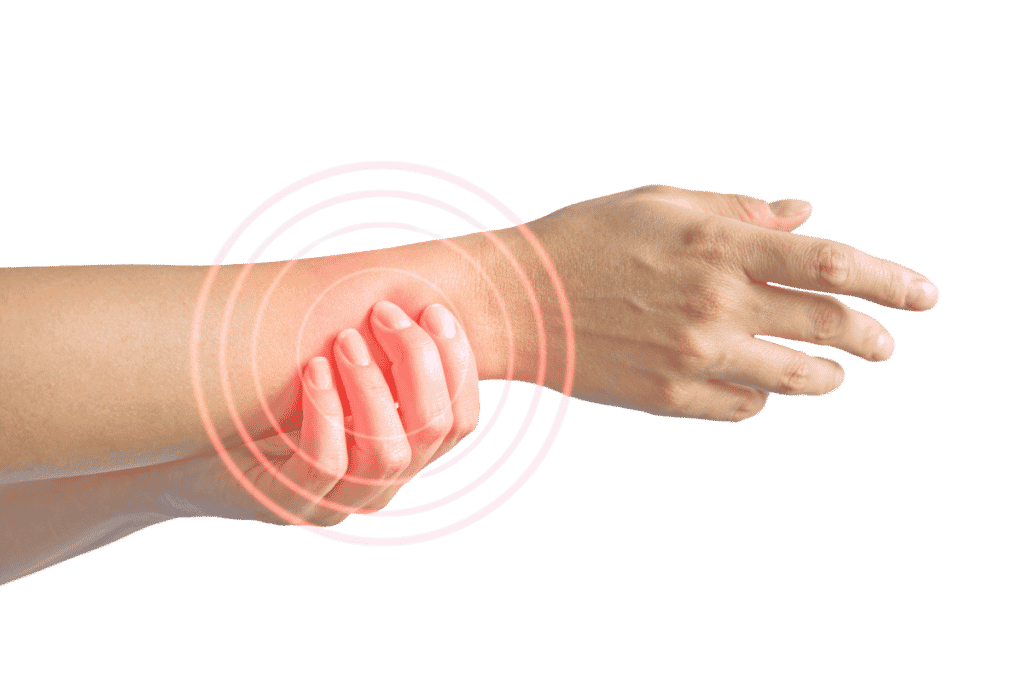
Antioxidant Benefits
Animal studies are the primary source of information regarding devil’s claw’s use as an antioxidant. It is shown to increase the production of superoxide dismutase in a dose-dependent manner, as well as enhance superoxide catalase and glutathione peroxidase.
These are all potent antioxidants that are endogenous to both humans and rats. A resultant decrease in lipid peroxidation was observed in the same study. Researchers speculate that antioxidant properties may also be partially responsible for the plant’s anti-inflammatory effect [29].
Digestive Benefits
One of the oldest uses of devil’s claw is as a digestive stimulant. Researchers have proven this to result from the iridoid glycosides in plants. These compounds enhance gastric acid production and thus improve digestive ability [32].
Chondroprotection
Harpagophytum has proven to have chondroprotective benefits. Researchers are not sure but suspect its ability to inhibit inflammatory markers like COX-2 and various leukotrienes, as well as NO and tumor necrosis factor-alpha, may be responsible [19].

Osteoarthritis
Osteoarthritis is one of the areas where devil’s club is not only acknowledged as potentially being helpful but fully indicated after numerous clinical trials.
One such trial followed the administration of 2,400 mg of an aqueous Harpagophytum extract with 50 mg of harpagoside (Doloteffin) to every 75 patients each day to evaluate its effect on their osteoarthritis pain levels.
Though there was no control, the subjects reported an average reduction in pain of 22.9% compared to the baseline. Physicians reported a 46% improvement on regular assessments, as well as a 35% increase in mobility and a 25.4% improvement in joint crepitus.
Another study followed the same medication’s ability to help fight pain in patients with either knee, hip, or back pain caused by osteoarthritis. This second study lasted eight weeks, and the dose was slightly higher at 60 mg.
Patients struggling with hip pain reported a 35-37% reduction in their pain levels. Knee pain patients experienced a 38% reduction, with similar results in the group with back pain [30].
Another devil’s claw pharmaceutical extract, Harpadol, was tested at doses of 2,610 mg daily (equivalent to 57 mg of harpagoside daily). The study followed 122 patients over four months, and patients reported a significant reduction in pain that continued to progress along with the study.

Patients who were using the devil’s claw drug also found that they used fewer non-steroidal anti-inflammatory drugs than patients without the extract. Furthermore, they had a lower rate of adverse events compared to the control group, who were taking another, unspecified anthraquinone to manage their pain [34].
Rheumatism & Lower Back Pain
The other area in which devil’s claw is clinically indicated is in patients with rheumatism and lower back pain. A 2007 review of available literature at the time collected evidence from 10 controlled studies using Harpagophytum to fight lower back pain [33].
Though several of the studies could hardly be considered scientifically perfect due to flawed methods, there was nonetheless revealed a consistent pattern of significant improvement among patients taking devil’s claw.
In the first study, patients were given either devil’s claw extract or a placebo. The patients, who ranged in age from 18 to 75, were counted after the study. In the devil’s claw group, nine were completely pain-free. One person in the placebo group was pain-free.
Another study evaluated the effectiveness of WS1531, a devil’s claw extract that provides doses of either 50 mg or 100 mg of harpagoside daily. After the study concluded four weeks later, the pain-free patients were counted.
From the 100 mg group, ten patients were pain-free. The 50 mg group produced six pain-free patients, and the placebo group produced three. Though the number of pain-free patients increased along with the dose, the symptomatic reduction was most significant at the 50 mg dose.

Safety & Precautions
Toxicity
Significant research has been done to determine the toxicology of devil’s claw. Numerous studies and reviews have evaluated the lethal dose in mice. The first established LD50 was in 1958 for an unspecified liquid extract at 34 mL/kg when intravenously injected [24].
More recently (specifically), Vollman identified an LD50 of 23 mL/ kg and 10 mL/kg for infusions and a 4:1 extract made from chloroform and butanol, respectively.
However, Harpagophytum seems to be much less toxic in primate and chicken tissues. An LD0 was identified at 4640 mg/kg, and over 1,000 mg/kg intravenously injected aqueous extract. As well, a 395 mg/kg dose of harpagoside resulted in an LDo and a 511 mg/kg an LD50.
This continued variance in the search for a definitive LD50 continues until today. Suffice it to say that, in layman’s terms, you will have a pretty hard time overdosing on devil’s claw. Even if you’re using a fairly potent extract, you’ll be fine unless you’re attempting to poison yourself.
Clinical Safety
Multiple studies have proven short- and long-term use of the plant and plant extracts safe. Some studies have gone on for over a year and continued to report the plant and its alkaloids being well-tolerated. Any side effects were mild digestive discomfort [26].
Devil’s claw is a mild inhibitor of several cytochrome enzymes responsible for the metabolism of most drugs and alkaloids that humans consume. However, the inhibition is not believed to be significant enough to cause any interaction except in the following cases:
- Devil’s claw has been shown to reduce blood pressure in animals and should be used only with medical supervision in patients with blood pressure problems.
- Devil’s claw should be avoided or used cautiously by people with diabetes due to its ability to lower blood pressure.
Remember: It is always best to check with your doctor before starting any new supplement.
Final Thoughts: Devil’s Claw
Devil’s claw is an impressive plant with a whole host of benefits, but it truly excels in treating musculoskeletal problems like osteoarthritis. Modern medicine has patented numerous extracts of the alkaloid harpagoside, which are derived from powerful medications for fighting osteoarthritis.
Despite its unpleasant and threatening appearance, devil’s claw remains the principal export crop of some African countries due to its clinical importance across the globe. In addition to fighting osteoarthritis, it can also help improve digestion, resist oxidation, and reduce inflammation.
Devil’s claw is not easy to cultivate in temperate cultures; thus, it will have to be purchased for most readers. Standardized extracts will inform you regarding the exact dosage of harpagoside so that you can employ the proper amount.
Though it has a high safety profile, one should still be cautious when mixing devil’s claw with other drugs since it inhibits numerous cytochrome enzymes. Speak with your healthcare practitioner about any interactions.
- Ncube, S. F., Ndagurwa, H. G., Mundy, P. J., Sibanda, S., & Dlodlo, M. (2022). Ethnobotanical knowledge and use-value of Harpagophytum (Devil’s claw) in Matabeleland, Zimbabwe. South African Journal of Botany, 144, 134-144.
- Nyambe, M. M., Kwembeya, E. G., Lisao, K., & Hans, R. (2021). Oral hygiene in Namibia: A case of chewing sticks. Journal of Ethnopharmacology, 277, 114203.
- Eid, M. A., Al-Shammery, A. R., & Selim, H. A. (1990). The relationship between chewing sticks (Miswak) and periodontal health. II. Relationship to plaque, gingivitis, pocket depth, and attachment loss. Quintessence International, 21(12).
- Mncwangi, N., Chen, W., Vermaak, I., Viljoen, A. M., & Gericke, N. (2012). Devil’s Claw—A review of the ethnobotany, phytochemistry and biological activity of Harpagophytum procumbens. Journal of ethnopharmacology, 143(3), 755-771.
- Grant, L., McBean, D. E., Fyfe, L., & Warnock, A. M. (2007). A review of the biological and potential therapeutic actions of Harpagophytum procumbens. Phytotherapy Research, 21(3), 199-209.
- Grant, L., McBean, D. E., Fyfe, L., & Warnock, A. M. (2007). A review of the biological and potential therapeutic actions of Harpagophytum procumbens. Phytotherapy Research, 21(3), 199-209.
- Helmstädter, A. (2015). Xysmalobium undulatum (Uzara) research–how everything began. Journal of Ethnopharmacology, 164, 385-387.
- Stewart, K. M., & Cole, D. (2005). The commercial harvest of devil’s claw (Harpagophytum spp.) in southern Africa: The devil’s in the details. Journal of ethnopharmacology, 100(3), 225-236.
- Czygan, F.-C.; Krüger, A.; Schier, W.; Volk, O.H. Pharmazeutisch-biologische Untersuchungen der Gattung Harpagophytum (Bruch.) DC ex Meissn. 1. Mitteilung: Phytochemische Standardisierung von Tubera Harpagophyti. Dtsch. Apoth. Ztg. 1977, 117, 1431–1434
- Wood, JG The Uncivilized Races, or Natural History of Man; American Publishing Company: Hartford, CT, USA, 1870; Volume 1, p. 783.
- Lübbert, A. Aus dem deutsch-südwestafrikanischen Schutzgebiete. Ueber die Heilmethoden und Heilmittel der Eingeborenen in Deutsch-Südwestafrika. Mitth. Forsch. Gelehrt. Dtsch. Schutzgeb. 1901, 14, 77–90.
- Brendler, T. (2021). From bush medicine to modern phytopharmaceutical: A bibliographic review of Devil’s Claw (Harpagophytum spp.). Pharmaceuticals, 14(8), 726.
- Brendler, T. (2021). From bush medicine to modern phytopharmaceutical: A bibliographic review of Devil’s Claw (Harpagophytum spp.). Pharmaceuticals, 14(8), 726.
- Dinter, K. Deutsch-Südwest-Afrika. Flora, Forst- und Landwirtschaftliche Fragmente; Weigel: Leipzig, Germany, 1909; p. 212
- Kroemer, B. Mit Schwert & Pflugschar in Sachsen und Südwestafrika. Anekdoten und Geschichten Eines Südwester Pioniers: Gottreich Hubertus Mehnert; “Glanz & Gloria” Verlag: Windhoek, Namibia, 2007; p. 128. ISBN 9789991668970.
- Brendler, T. (2021). From bush medicine to modern phytopharmaceutical: A bibliographic review of Devil’s Claw (Harpagophytum spp.). Pharmaceuticals, 14(8), 726.
- EMA. Assessment Report on Harpagophytum procumbens DC. and/or Harpagophytum zeyheri Decne., Radix. EMA/HMPC/627058/2015; Committee on Herbal Medicinal Products (HMPC): London, UK, 2016.
- Mosoabisane, M. F. T. (2009). Variation in chemical composition of Harpagophytum species as function of age and locality (Doctoral dissertation, University of the Free State).
- Fiebich, B. L., Heinrich, M., Hiller, K. O., & Kammerer, N. (2001). Inhibition of TNF-α synthesis in LPS-stimulated primary human monocytes by Harpagophytum extract SteiHap 69. Phytomedicine, 8(1), 28-30.
- Blumenthal, M. (1998). Therapeutic guide to herbal medicines. American Botanical Council.
- Chrubasik, S. (1997). Biopharmazeutische Qualität und klinische Wirksamkeit von Zubereitungen aus Harpagophytum Extrakt. Rheumatherapie mit Phytopharmaka; Chrubasik, S., Wink, M., Eds, 77-85.
- Caprasse, M. (1980). Description, identification and therapeutical uses of the ” devil’s claw”: Harpagophytum procumbens DC (author’s transl). Journal de pharmacie de Belgique, 35(2), 143-149.
- Lanhers, M. C., Fleurentin, J., Mortier, F., Vinche, A., & Younos, C. (1992). Anti-inflammatory and analgesic effects of an aqueous extract of Harpagophytum procumbens. Planta Medica, 58(02), 117-123.
- Gallo, E.; Lucenteforte, E.; Firenzuoli, F.; Menniti-Ippolito, F.; Maggini, V.; Pugi, A.; Mascherini, V.; Gori, L.; Mugelli, A.; Vannacci, A. Herbalists’ perception of risks involving commonly sold medicinal plants in Italy. Complement. Med. 2014, 22, 81–86.
- Lanhers, M. C., Fleurentin, J., Mortier, F., Vinche, A., & Younos, C. (1992). Anti-inflammatory and analgesic effects of an aqueous extract of Harpagophytum procumbens. Planta Medica, 58(02), 117-123.
- Huang TH, Tran VH, Duke RK, et al. Harpagoside suppresses lipopolysaccharide-induced iNOS and COX-2 expression through inhibition of NF-kappa B activation. J Ethnopharmacol 2006;104:149-155
- Kaszkin, M., Beck, K. F., Koch, E., Erdelmeier, C., Kusch, S., Pfeilschifter, J., & Loew, D. (2004). Downregulation of iNOS expression in rat mesangial cells by special extracts of Harpagophytum procumbens derives from harpagoside-dependent and independent effects. Phytomedicine, 11(7-8), 585-595.
- Wegener T, Lupke NP. Treatment of patients with arthrosis of hip or knee with an aqueous extract of devil’s claw (Harpagophytum procumbens DC.). Phytother Res 2003;17:1165-1172
- Bhattacharya, A., & Bhattacharya, S. K. (1998). Antioxidant activity of Harpagophytum procumbens (devil’s claw). British Journal of Phytotherapy, 5, 68-71.
- Chrubasik, S., Thanner, J., Künzel, O., Conradt, C., Black, A., & Pollak, S. (2002). Comparison of outcome measures during treatment with the proprietary Harpagophytum extract Doloteffin® in patients with pain in the lower back, knee or hip. Phytomedicine, 9(3), 181-194.
- Chantre, P., Cappelaere, A., Leblan, D., Guedon, D., Vandermander, J., & Fournie, B. (2000). Efficacy and tolerance of Harpagophytum procumbens versus diacerhein in treatment of osteoarthritis. Phytomedicine, 7(3), 177-183.
- Brammer, D. L. (2001). Botanical Treatment of Benign Prostatic Hyperplasia (BPH. Complementary health practice review, 7(1), 21-24.
- Di Lorenzo, C., Dell’agli, M., Badea, M., Dima, L., Colombo, E., Sangiovanni, E., … & Bosisio, E. (2013). Plant food supplements with anti-inflammatory properties: a systematic review (II). Critical reviews in food science and nutrition, 53(5), 507-516.

